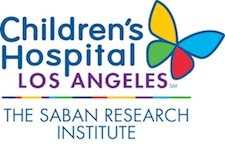LOS ANGELES--(BUSINESS WIRE)--Mongolia’s economic growth rate in 2012 was 12.3%—one of the highest in the world—mostly due to exports of their vast natural resources. Growth has caused rapid urbanization, and a transition out of a mainly nomadic society. These changes have resulted in serious health problems that Mongolia currently lacks the capacity to address. International support has come from volunteers, including a team of physicians and healthcare professionals from Children’s Hospital Los Angeles.
For the last 15 years, David Warburton, MD, of the Saban Research Institute of Children’s Hospital Los Angeles, has been volunteering in Mongolia’s capital city, Ulaan Baatar, and the surrounding Gobi Desert. Along with Children’s Hospital physicians Richard Mackenzie, MD, Lawrence Ross, MD, Stuart Siegel, MD, Andreas Reiff, MD, Masato Takahashi, MD and Marilyn Woo, MD, this group has helped to improve treatment in children’s cancer, cardiology, dysmorphology/genetics, infectious diseases, intensive care, neonatology, pulmonology, and rheumatology at the National Center for Maternal and Child Health (NCMCH) in Ulaan Baatar. With their support, the NCMCH has become a cleaner, better-equipped, and technically more advanced academic medical center.
Recently, Warburton and colleagues received a five-year $1.25 million grant from the Fogarty International Center of the National Institutes of Health (NIH) and the National Institute for Environmental Health Sciences to continue their research on air pollution and to build capacity among child health experts and government agencies in Mongolia. “Mongolians are wonderful, smart, warm people,” says Warburton. “They listen to and appreciate our advice and are acting on it as GDP has risen and resources become increasingly available in their country. We have seen impressive changes over the past decade and now look forward to more capacity building and implementation over the coming 5 years of NIH-supported work. We hope to have a major impact on urban pollution and the health of women and children in Mongolia.”
Of the difficulties that urbanization presents to children’s health, rising air pollution is of major importance. The health effects from urban air pollution have been calculated to cost Mongolia 4% of GDP. During winter in Ulaan Baatar, atmospheric particulate levels are over 250-fold above the recommended levels due to a myriad of factors including the burning of unrefined coal in stoves used to heat the traditional round felt tents, called gers. Increasing vehicular traffic and power plants also contribute to the dangerously high carbon monoxide, sulfur dioxide and nitrogen dioxide levels in the air.
Warburton works toward improving health in Mongolia through a multitude of avenues. He recently traveled to Washington D.C. for a joint meeting between the Chronic Non-Communicable Diseases and Disorders and the Tobacco Research Training programs at the NIH, and participated in the Fourth Annual Consortium of Universities for Global Health conference, “Global Health: Innovation, Implementation, Impact.” In April, Warburton visited Ulaan Baatar to set up collaborations with NCMCH, National University of Mongolia, Mongolia’s Health Sciences University and the Government of Mongolia. He also works closely with the North American Mongolian Business Council to advise on sustainable growth of GDP in Mongolia through external trade.
Warburton has also begun working with the United States Ambassador as well as the United Kingdom’s Ambassador to Mongolia to further leverage international support for this critical work. Besides improving patient care directly through the training of medical and scientific personnel at the NCMCH, Warburton advocates executive management and leadership training to ensure continued improvement of efficiency within the healthcare system. He collaborates on the latter with Jonathan Samet, MD and Heather Wipfli, PhD at the University of Southern California Institute for Global Health.
About Children’s Hospital Los Angeles
Children's Hospital Los Angeles has been named the best children’s hospital in California and among the top five in the nation for clinical excellence with its selection to the prestigious US News & World Report Honor Roll. Children’s Hospital is home to The Saban Research Institute, one of the largest and most productive pediatric research facilities in the United States, is one of America's premier teaching hospitals and has been affiliated with the Keck School of Medicine of the University of Southern California since 1932.
For more information, visit www.CHLA.org. Follow us on Twitter, Facebook, YouTube and LinkedIn, or visit our blog: www.WeAreChildrens.org.




